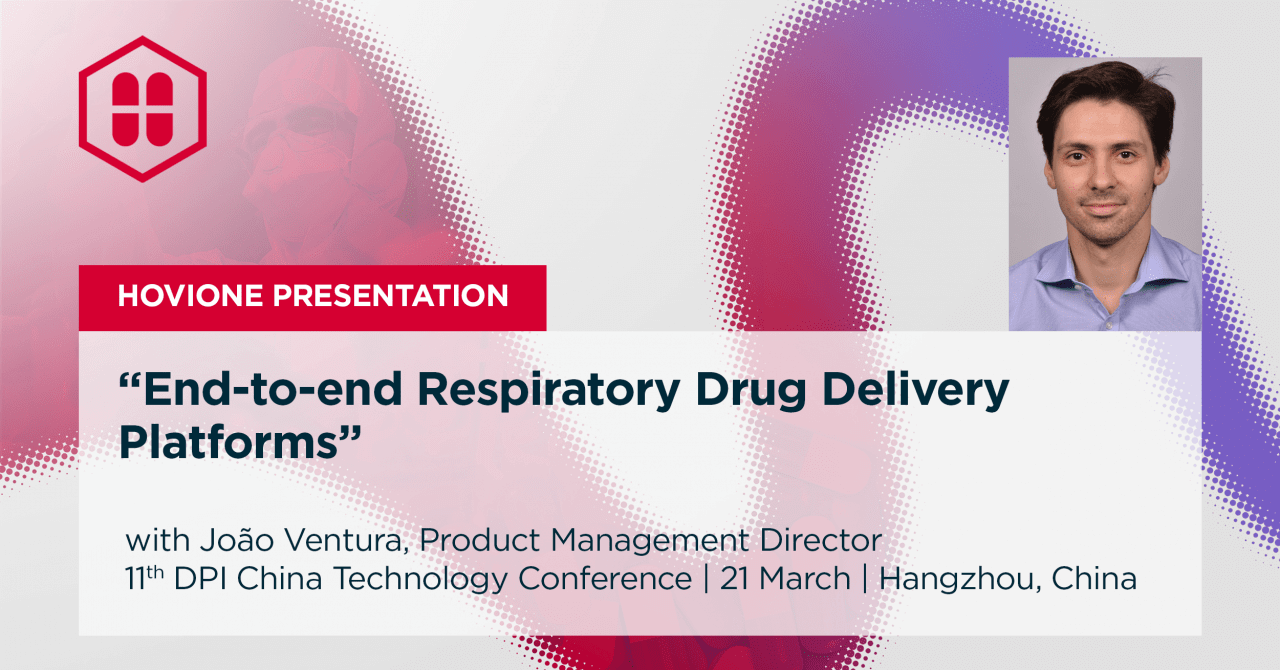Press Room
DPI China 2024

Looking for a complete One-Site Solution for your inhalation and nasal therapies? Meet Hovione at the 11st DPI China Technology Conference! Delivering solutions every breath of the way.
We live and breathe innovation for the successful delivery of your inhalation and nasal therapies.
Hovione offers customized high-performance APIs, particle engineering and formulation along with a full range of highly specialized, patented and innovative devices, all in one site.
Don’t miss the chance to speak with our Inhalation Experts.
On March 21, our team is at the 11th DPI China Technology Conference ready to share how this integration on a single site can support your project.
ORAL PRESENTATION – March 21
"End-to-end Respiratory Drug Delivery Platforms", with João Ventura, Product Management Director, Business Management Products.
The presentation will provide a perspective on the status and outlook of respiratory drug delivery and address the most relevant platforms for end-to-end dry powder inhalation (DPI) development, as DPIs are the dosage form of choice for achieving superior delivery efficiency to patients.
This presentation will focus on advanced particle engineering technologies for manufacturing inhalation active pharmaceutical ingredients (APIs), new formulation development platforms, aiming to address the pharmacokinetics requirements of the target drug and indication, and device developments for maximum drug delivery efficiency for lung delivery. An integrated, end-to-end development approach will be presented designed to maximize drug delivery efficiency and safety and address a diversified array of diseases.
Learn more about our Inhalation and Nasal offering.

